The objective of the SET-226 is to improve the knowledge of atmospheric turbulence impact on EO and laser systems performance in order to develop and test turbulence mitigation techniques to enhance the detection, identification capabilities of the system limited by turbulence effects. In fact, high performance optical systems suffer from atmospheric turbulence effects, limiting identification range and resolution. The images are blurred and distorted. Laser beams wander and break up. The degradation is linked to the turbulence strength expressed by Cn2. Various techniques can be implemented to mitigate the turbulence effects, such as Adaptive Optics systems to improve beam quality / focusing or image processing techniques to improve image quality. Consequently an accurate prediction of turbulence strength in the area of interest is necessary to propose or design the adequate technique.
A trial was conducted in DRDC (Valcartier – Quebec) during 20 days in August and September 2016 to acquire images sequences and propagate laser beams under various turbulence conditions to
- Evaluate performance of different turbulence mitigation techniques by comparison with uncorrected imaging or laser systems. We focused on the study of the robustness of Wave Front Sensing (WFS) to strong scintillation regime and image processing techniques.
- Test turbulence characterization methods;
- Validate the propagation and performance system models.
- Define new criteria for laser safety applicable to propagation in turbulent atmosphere
8 nations (15 people) were involved in this trial, leveraging on sharing and collaboration to improve common knowledge and capabilities. The DRDC facilities allow indoor and outdoor experiments. For indoor ones, the propagation distance is 250 m and turbulence phase screens can be generated by several heaters located at different positions along the line of sight, in this case the observed images, resolution charts and videos are displayed on a screen using a cinema-grade projector. A 1 m x 1 m array comprising 100 LEDs was made available courtesy of AFRL (NATO in Figure 1). Two different WFS were tested, the traditional Shak-Hartmann (provided by Norway) and a holographic sensor provided by Australia. Outdoor testing occurred on a 2.5 km range with turbulence naturally produced by the heat from the sun. Imagery from the LED array and specially designed targets was tested. In both configurations, many optical instruments with different aperture and pixel sizes, and spectral bandwidths, provided by Netherlands, United Kingdom, USA and Canada, were tested side-by-side. They recorded simultaneously the same image sequence (see Figure 1 and Figure 2 for indoor imaging measurements and Figure 3 for outdoor ones). The turbulence characterization is performed using a traditionally accepted method, a scintillometer, as well as a novel technique proposed by Germany that uses imagery from the array to evaluate turbulence profiles.
Laser propagation was tested outdoors over the 2.5 km path using a mobile laser system from Canada (Figure 4). Figure 5 presents sample beam profiles as captured by the camera through two turbulence conditions (a) Cn2 = 10-15 m-2/3 and (b) Cn2 = 7.5 x10-14 m-2/3. A first attempt in modelling the captured profiles using the beam propagation model is depicted in (c) and (d).
The next step is to process the data. We will focus on the comparison of different image processing techniques on same image sequence and different turbulence conditions, on the validation of the tools developed by the members of the group to assess turbulence impact on system performance and on the test of turbulence characterization method.
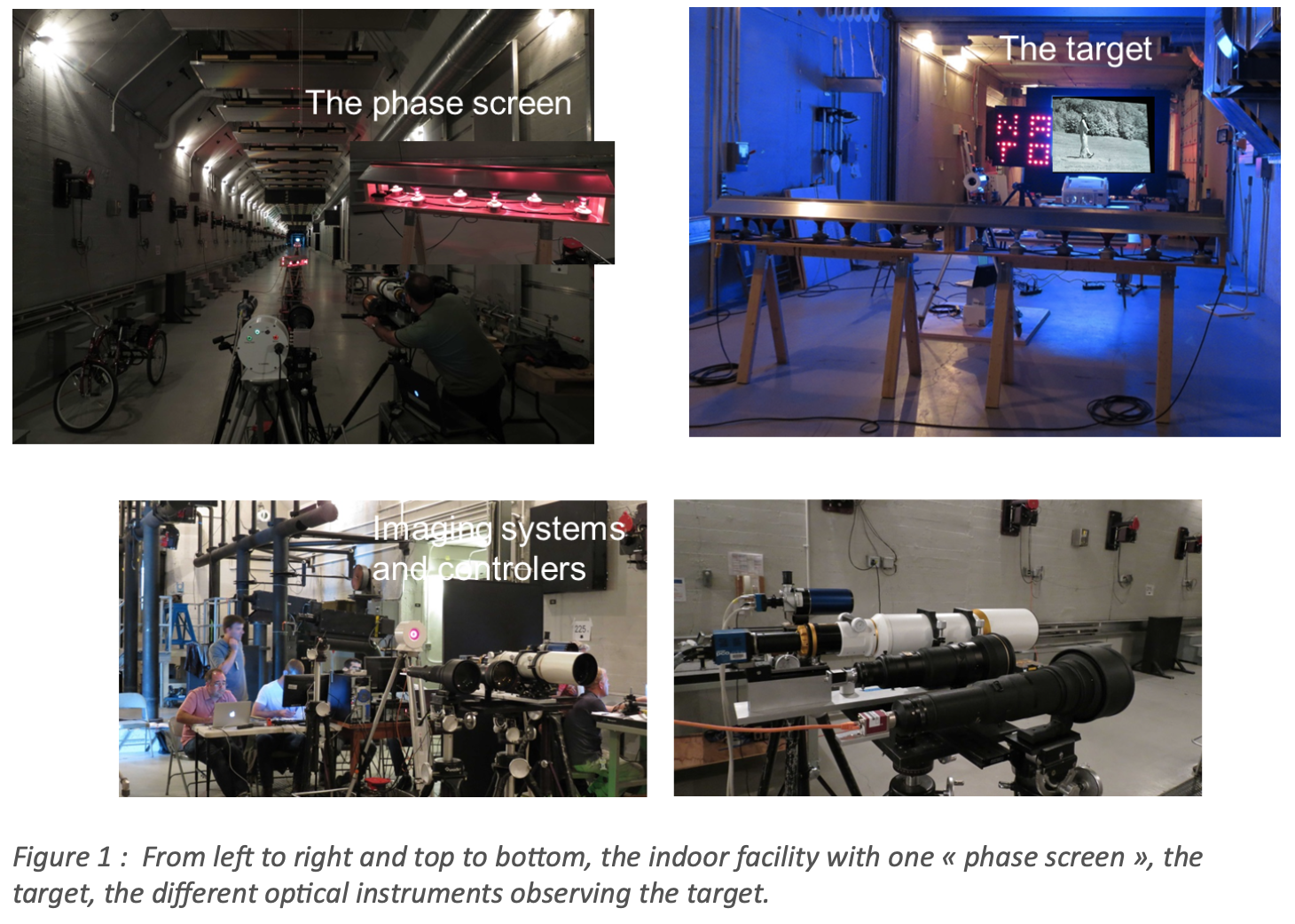
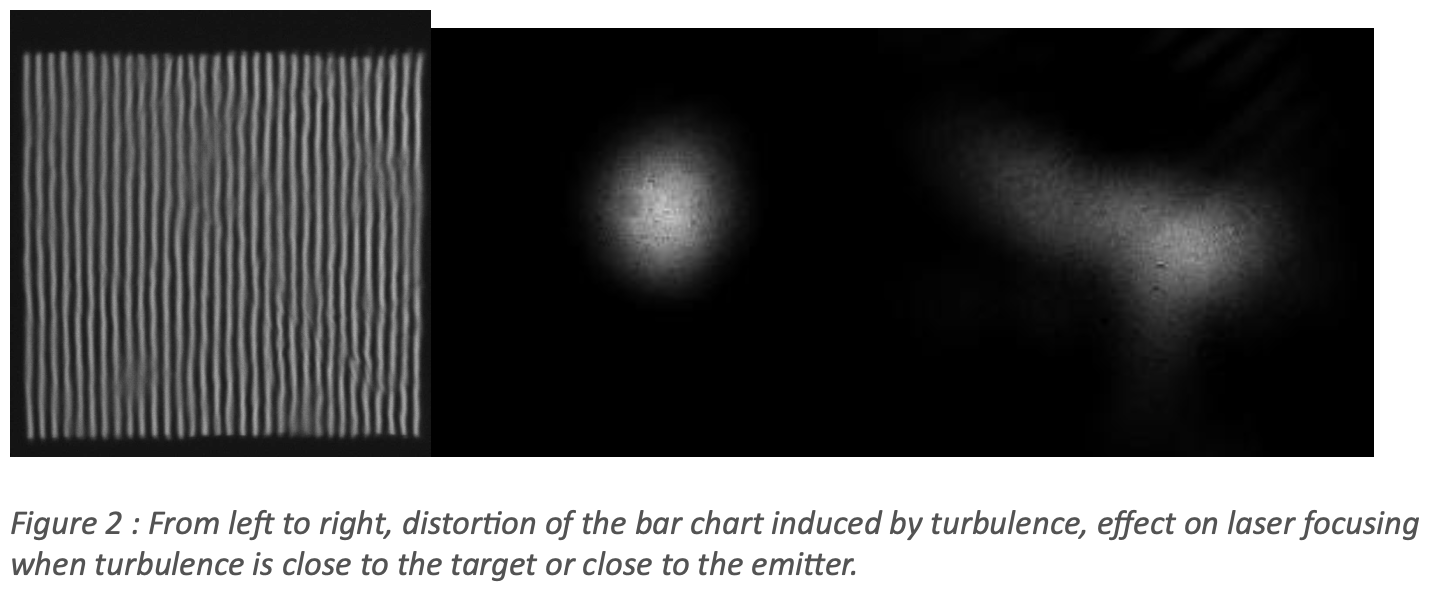
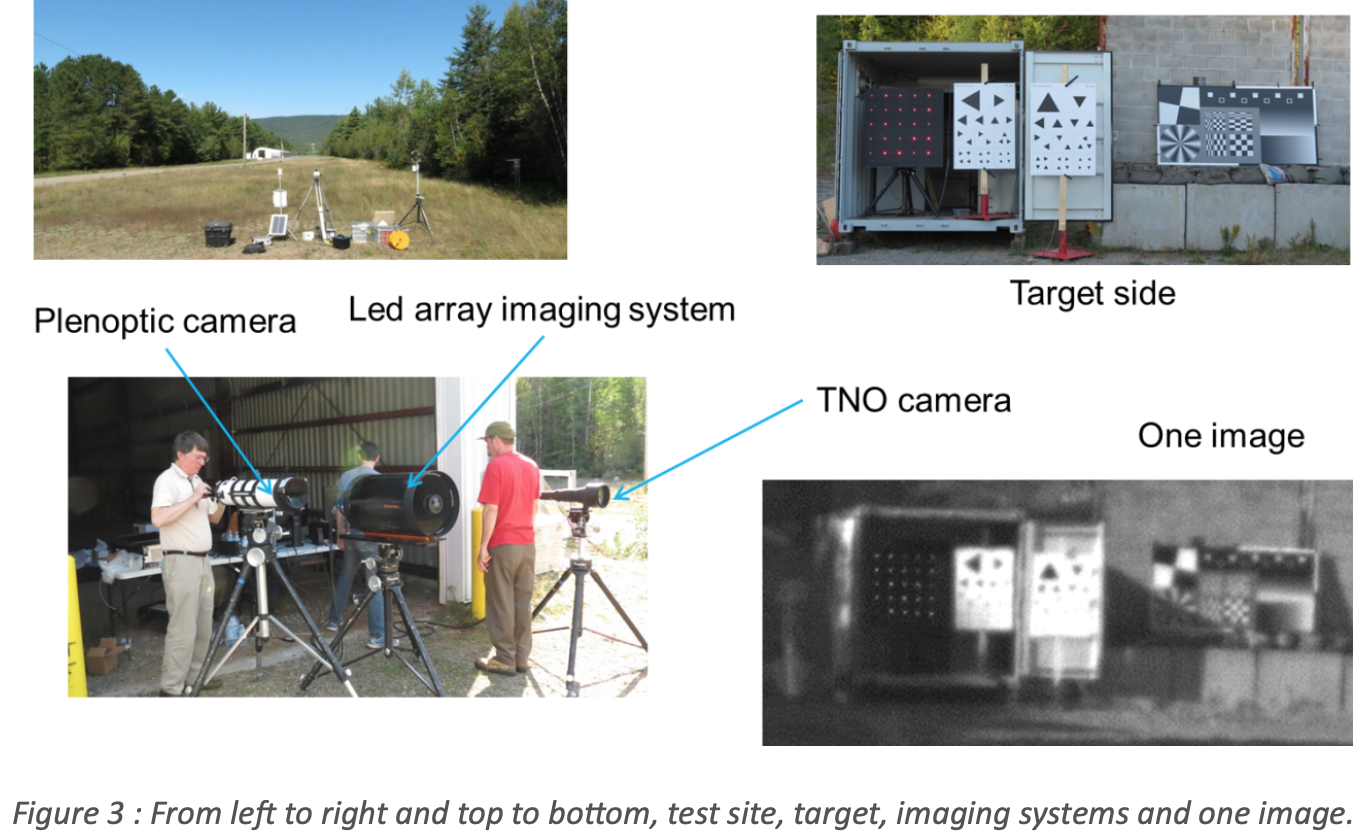
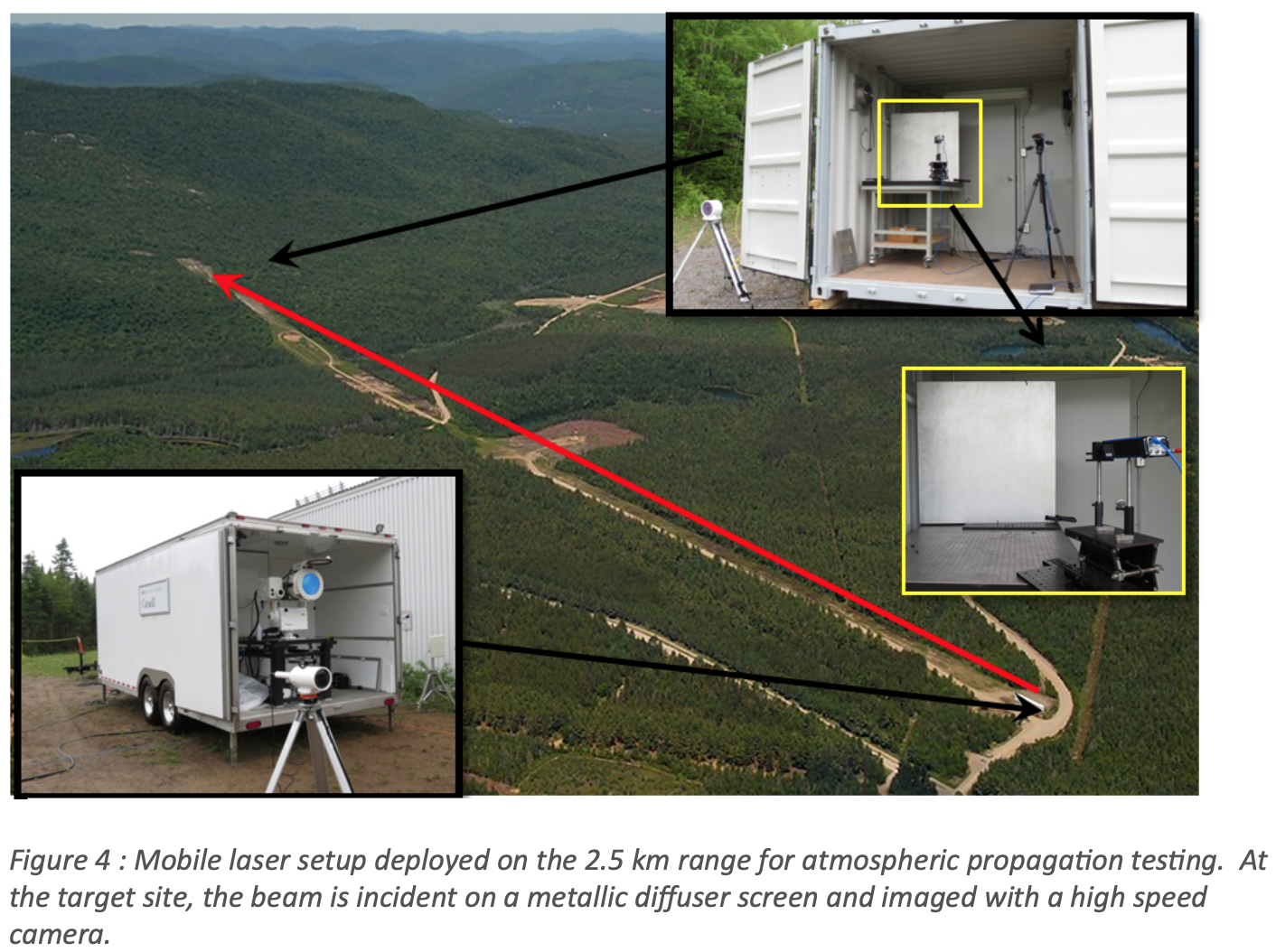
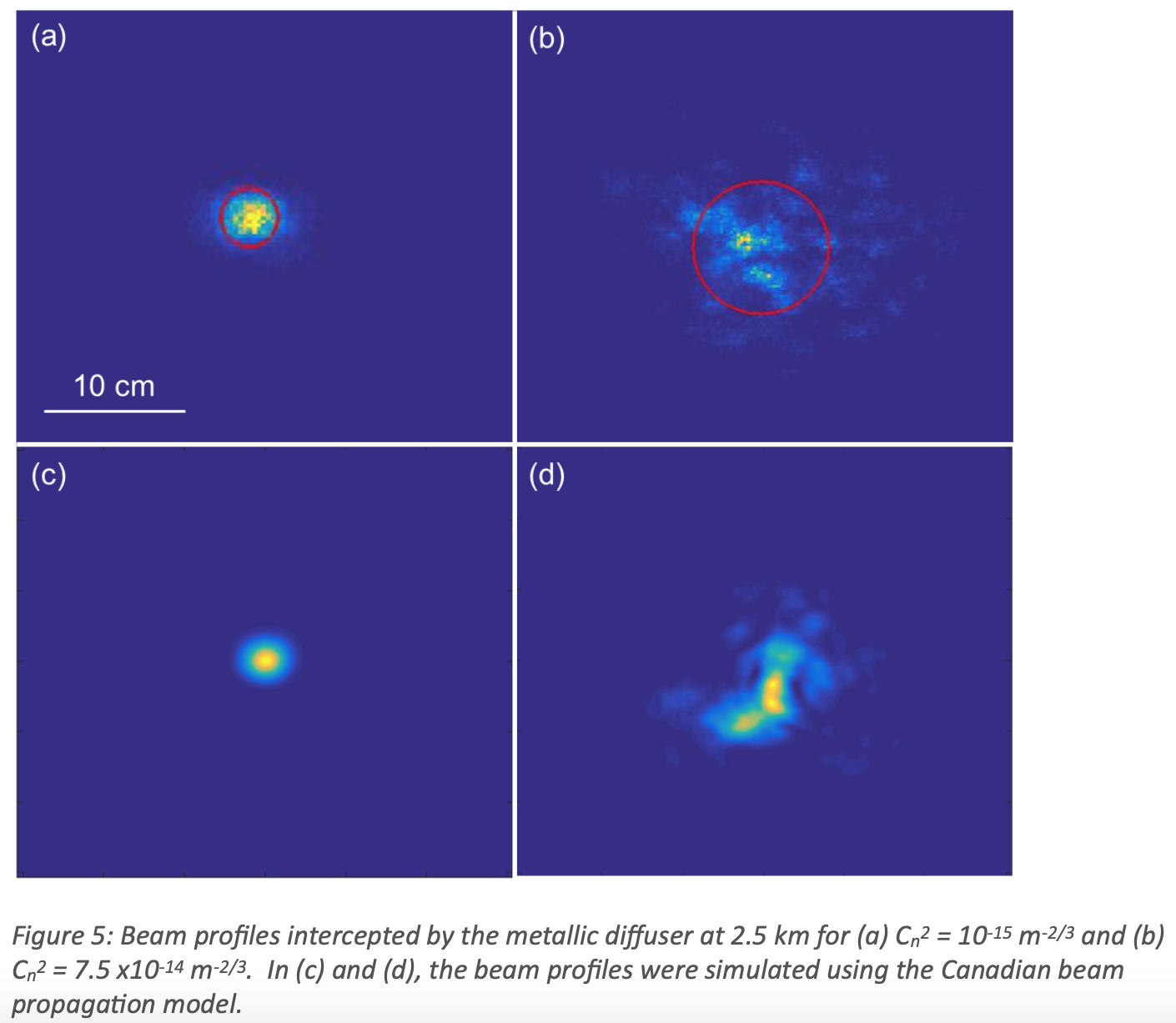
Published by SET | 